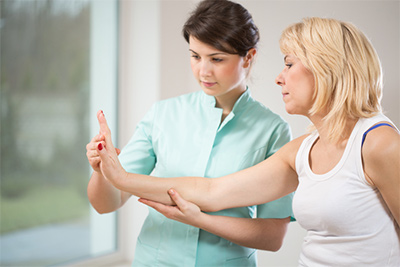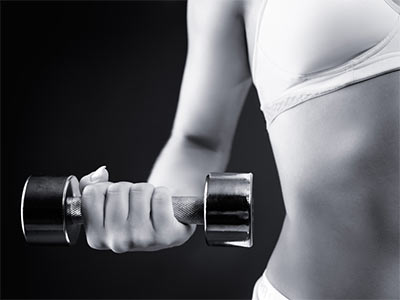
Most of the injuries we worry about, or run into, aren’t in the muscles. Muscles can be strained or pulled, even torn, but most injuries occur in connective tissues. Despite this, they don’t get nearly enough attention.
Today we’re talking about tendons. Specifically, how they’re used, their recovery, and how they get stronger. This is going to include how to take better care of yours, and all the cool stuff about these powerful elastic tissues that make the most amazing feats of athleticism possible!
Overlooked: Connective Tissue Function and Risks
We overlook tendons because they don’t make themselves known to us until it’s too late. They don’t change in visible and obvious ways like muscles, and they’re not as obviously important to us as bones.
Tendons, and ligaments to a similar extent, fly under the radar. We don’t pay attention to them until it’s too late. The upshot of this is the risk of injury is quite high: they’re often overused, and poor recovery after intense activity is one of the major reasons that we caution people about rushing their workouts or over-reaching too fast!
Tendons have 2 major problems that you need to keep in mind:
1. Over-use: excessive use of tendons without the appropriate recovery time can lead to degeneration
2. Under-use: tendons that aren’t trained, such as in sedentary people, are at risk of serious issues like laxity, catastrophic damage, and they even increase dislocation risks.
Obviously, it’s a fine balance between these two types of problems. The point is to remain active and load the tendons in ways that challenge and improve them, but to be sensible with loading. Fortunately, it’s not walking a knife’s edge; there’s a significant range of healthy and productive loading!
What matters first, however, is understanding how tendons work so you understand the risks and processes surrounding them…

A Brief Overview of Tendon Structure
Tendons are similar in their structure to muscles; they’re tightly packed bundles of singular fibres. Unlike muscles, they’re made up almost entirely of collagen, a non-contractile form of protein.
The majority of the tendon is made up of 2 major structures, that wrap around the actual tendon cell: collagen and small leucine-rich proteoglycans (SLRPs). The long-winded terminology aside, these are strong fibres that are arranged in bundles that partially resist tension (being pulled apart).
They’re also elastic, allowing them to store energy as they stretch and then release it as they shorten. This is why dynamic exercise like sprinting and jumping place extra stress on the tendons: they’re carrying all that elastic energy and it puts them under much greater strain than. For example, a leg press.
So, when we’re talking about tendons, these are the tissues that matter. It’s going to affect how they work, how you consider loading them through exercise, and the factors in their recovery.
The key things to remember are that they’re strong, elastic, and they rely heavily on collagen and SLRPs to stay strong. These can be damaged and degraded, however, so we need to look at how that happens – and how they respond to exercise…

The RISK and Point: How Tendons Get Damaged During Exercise
Tendons are one of the most common victims of overtraining. The challenge is that you don’t necessarily know there’s anything wrong until it’s too late. The degradation of tendons is the result of continuous under-recovery.
Even though they’re strong, elastic tissues, the tension you put on tendons does produce mechanical loading. This is both the stress that causes damage and requires recovery, and the stimulus for building strength and resilience in tendons.
The cycles of stretch and shortening, as well as the mechanical loading they produce, degrades collagen. This requires replacing and growth/strengthening will require even more time and resources once it’s back to the “old normal”.

The blood flow to your tendons is also less than muscles, which makes this recovery and strengthening process occur on a longer timeline. You’re going to see changes over roughly 5-10 times as long with tendons.
As we’ve discussed before, the risks of injury happen gradually and then all at once: you’re progressing injury risk quietly, and the actual injury is not just a single instance, but the result of those consistent weeks or months of under-recovery.
This is even more important in tendons because the main site for injuries isn’t the muscle, but the connection of the muscle itself to the tendon. This area, the myotendinous junction, is at high risk because the muscles adapt faster than the tendons, and this can cause tension in the connection between the two to cause tears and strains.
This is why consistent recovery is so important: failing to give your tendons time to recover and adapt while you exercise leaves them lagging behind the things your muscles can do. It’s also why we see so many injuries during periods of great training and results. The increased loading week on week, degrades the tendons while putting them under more tension each time!
How to Take Care of Your Tendons
Train Patiently
You can’t rush this! The proper maintenance of tendons comes from controlling your loading. You need to stay behind the “most you could possibly do with maximum effort” mindset. You don’t need to push yourself that far every time.
Regular check-ins to see what you’re capable of are great, but we don’t want to put undue stress on the body. Missing lifts or sprinting before you’ve conditioned your knees and hamstrings are 2 really obvious examples; proper exercise selection and weight choices matter.
Equally, you need to watch your total exercise volume. This is the amount you do in a given week or month, rather than just a single set or exercise. These are even more important, since they govern the stress/recovery process we mentioned above.
Consider how much you’re doing across a training week and make sure it’s an appropriate to your experience, as well as just not being a huge jump up on the last few weeks. This is the benefit of a professionally-designed and monitored program with a coach or trainer, for example, to track and regulate volume.

Vascularity: Active Recovery Helps Tendons Heal and Improve
One of the challenges for tendon recovery is the relatively modest blood supply they receive. While muscles are full of capillaries and are flushed with blood, tendons have roughly 1/10 the supply and thus have a smaller capacity for recovery.
Important nutrients for tendon recovery and strengthening flow in at a much slower rate than their muscular counterparts. This makes sense – they aren’t active in the same way – but it does limit how much you can put them through, since they have a rather set amount of recovery.
Fortunately, this blood flow limitation isn’t fatal, because tendons are flushed with blood during exercise. However, this means you need to practice low-intensity exercise that allows you to pump blood through these tissues without causing more stress to the tendons themselves.
Give Them Appropriate, Deliberate Conditioning/Prehab/Acc. Exercise
Preparation is the most important way you can prepare your tendons across the body for future loading. It’s the chronic solution to strengthening your tendons, and it involves things as simple as using lower-intensity, high-repetition isolation exercises.
These are seen in everything from bodybuilding to gymnastics. Exercises that are designed to strengthen the specific tissues, without placing huge loads on them with each rep, spurs the kind of adaptation you’re looking for and builds control over the movements, without much tendon stress.

This stacks the scales towards recovery, allowing you to make sure you’re adapting to the exercise, not having to worry as much about the recovery demands. The result is a gradual development of tendon strength and resilience, without any risk and only minimal recovery demand.
You can’t go back and do this work in the past: you have to do it now to prepare for the future. It’s the chronic adaptation you need to prevent chronic injury!
Nutritional Approach
Nutrition is as important for tendons as it is for other tissues, like muscle or fat. Tendons can only work with the nutritional ‘raw materials’ you give them.
If you paid attention in the discussion of tendon structure, you’ll realise that both SLRPs and collagen are derived from protein sources. As you can imagine, then, you’re going to benefit from a high protein diet, especially with a higher leucine content to support those all-important SLRPs.
You also need to get your vitamin C, as one of the most important vitamins for supporting the production of collagen. A key building block in healthy tendons.

Lucky enough, these two nutrients should be part of your diet anyway, as part of a well-planned diet that provides the protein and nutrients you need. It simply requires high-quality proteins and plenty of fruit and veg, which should be a priority anyway.
Sleep!
We cannot overstate the importance of sleep in appropriate exercise recovery and the maintenance/strengthening of the tendons.
Poor sleep is directly related with your risk of tendon injury both at a recovery and performance level. Proper sleep quantity and quality regulate the hormonal processes involved in the proper recovery and strength of your tendons.
Not only that, but in the short-term, the risks of catastrophic injury increase with poor sleep quality. Things like how you move and your reactivity to uneven footing, for example, depend heavily on out-of-training factors like sleep.
There’s no way to take the best care of your body while you’re sleep deprived. Prioritise the simple things … get to bed on time!

Final Thoughts
The tendons are both crucially important and paid too little attention. We’ve only covered the basics today, but they offer the information necessary to design a workout routine that gives proper attention to these crucial tissues for health, performance, and better healthspan!
Understanding the structure of tendons, how they work, and how they recover puts you in the perfect position to control the factors around your training and recovery. If nothing else, we hope it saves you some of those wasted weeks spent nursing a tendon injury!
Prepare your tendons ahead of time, give them the time they need to recover and adapt, and be serious about your recovery factors. That’s all it takes to save yourself pain, injury, and loss of hard-earned results!







